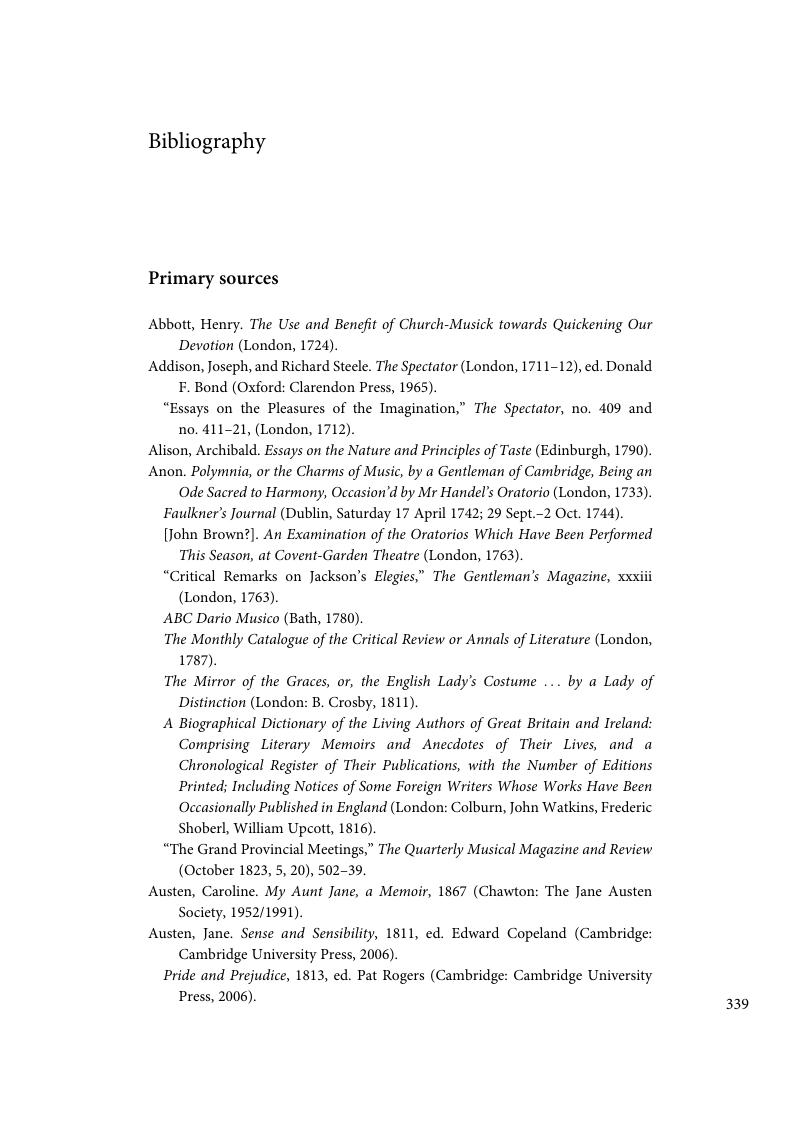Book contents
- Music in the Georgian Novel
- Music in the Georgian Novel
- Copyright page
- Dedication
- Contents
- Illustrations
- Book part
- Introduction
- Part I Sound and sense: moral issues
- Part II Sentiment and sensibility
- Part III Sweet music and the sublime
- Part IV Music as a vehicle for female identity
- Conclusion
- Notes
- Bibliography
- Index
- References
Bibliography
Published online by Cambridge University Press: 05 August 2015
- Music in the Georgian Novel
- Music in the Georgian Novel
- Copyright page
- Dedication
- Contents
- Illustrations
- Book part
- Introduction
- Part I Sound and sense: moral issues
- Part II Sentiment and sensibility
- Part III Sweet music and the sublime
- Part IV Music as a vehicle for female identity
- Conclusion
- Notes
- Bibliography
- Index
- References
Summary

- Type
- Chapter
- Information
- Music in the Georgian Novel , pp. 339 - 358Publisher: Cambridge University PressPrint publication year: 2015



